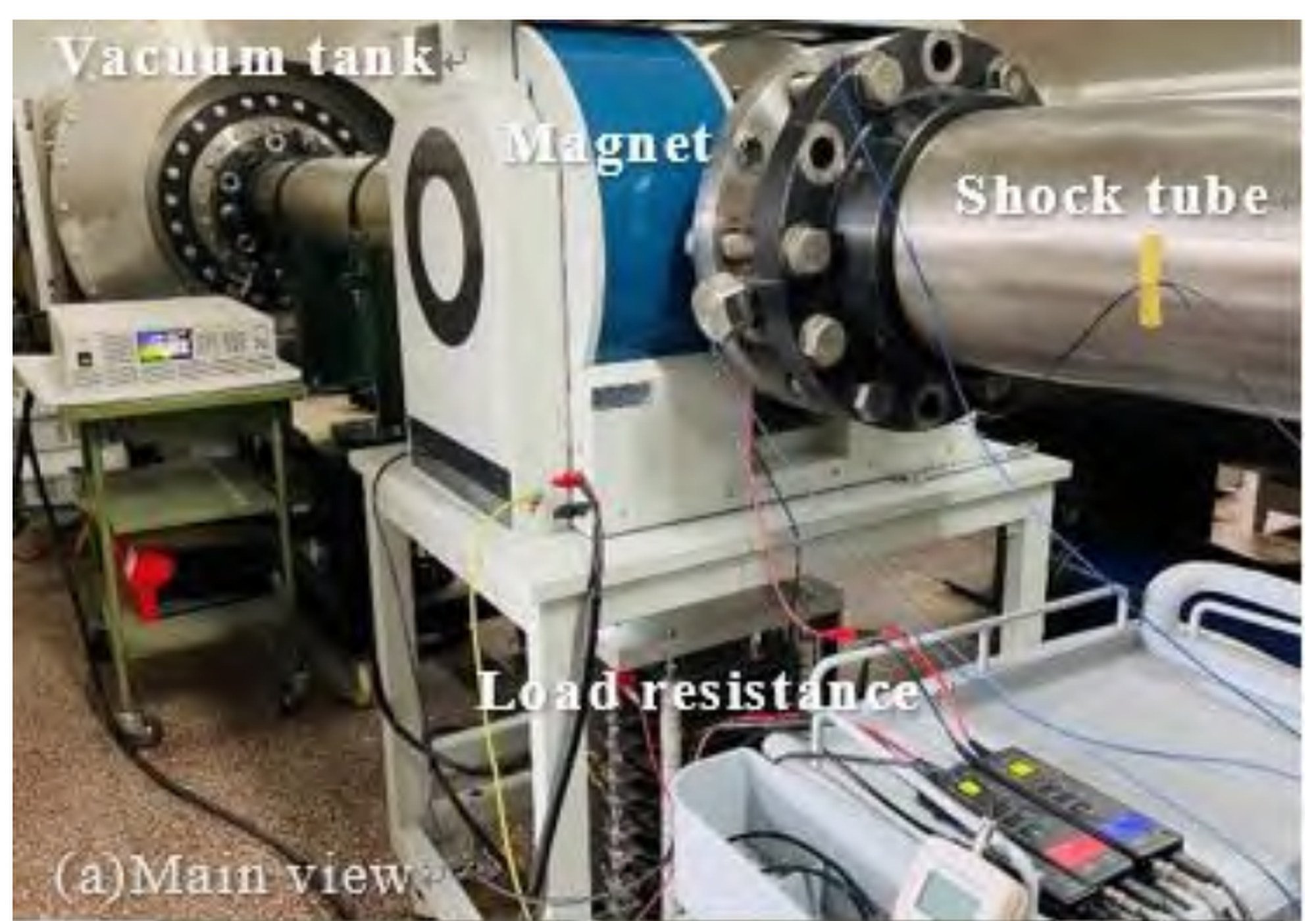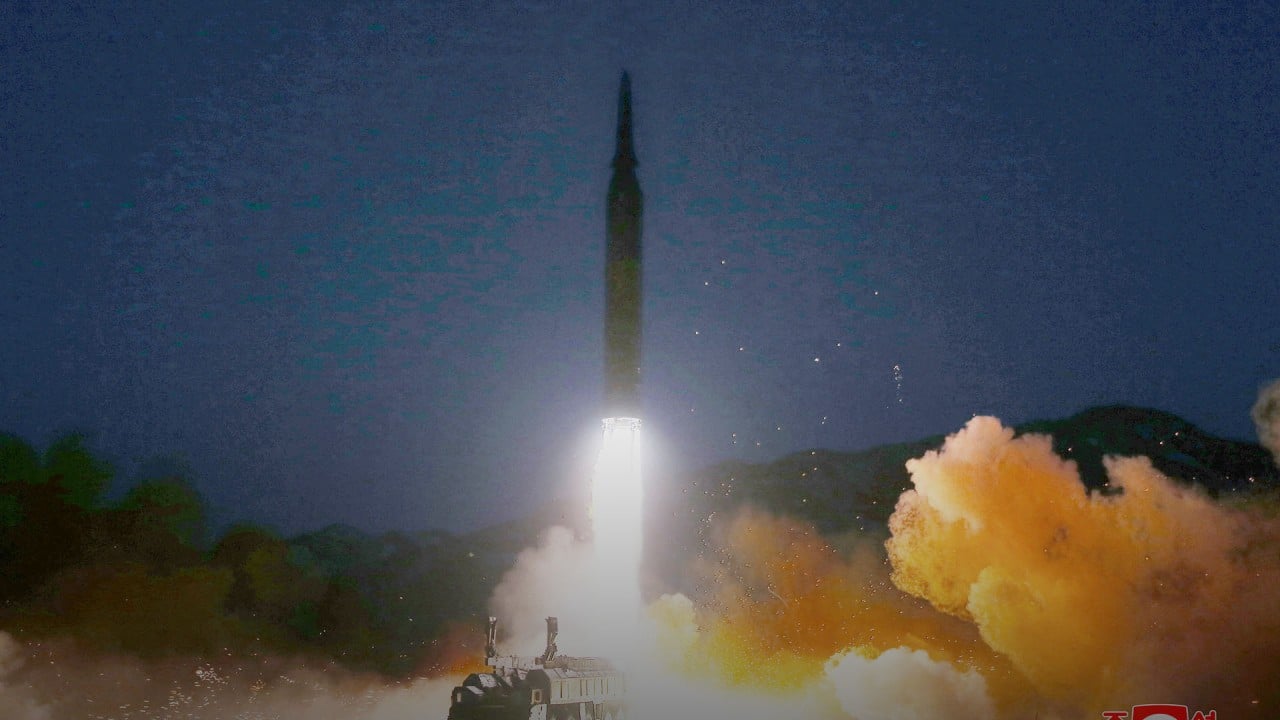
Chinese scientists build hypersonic generator for power-hungry weapons of the future
- Researchers say the technology could be used to charge military lasers, rail guns and microwave weapons that require huge amounts of electricity
- The device sets off explosions that turn hot gas into plasma full of fast-moving ions, which are converted into an intense current
The reusable air defence system that could protect China from hypersonic weapons
The device produced more than 10 times the power generated in previous experiments, they said in a paper published in the peer-reviewed Chinese Journal of Theoretical and Applied Mechanics on January 19.
The generator system works by setting off explosions that turn gas into fast-moving plasma. It then converts the plasma’s energy into high-power electricity.
In one experiment, the system generated high-energy shock waves through a hydrogen-oxygen explosion. The shock waves compressed argon gas and accelerated it to Mach 14, or 14 times the speed of sound, turning the inert gas into a highly conductive plasma full of hot, electrically charged ions.

The plasma streamed through a component called a magnetohydrodynamics (MHD) generator, a tubelike instrument that can collect energy from the fast moving ions and convert it into electricity.
The MHD generator produced rapid pulses of electric current of up to 212 kilowatts using less than one litre (0.26 gallons) of hypersonic gas, showing its potential to release a burst of energy in an extremely short time for military use, according to the researchers.
The MHD generator is a solution to some of the biggest constraints in developing and deploying pulsed energy weapons, which release huge bursts of energy to destroy a target.
Conventional combustion, such as the burning of fossil fuel in a jet engine, cannot produce ionised fluids fast enough for high-power electricity generation.
This type of electricity generation typically requires a large, sophisticated facility with generators that have many mechanical components and require regular maintenance.
The electricity produced in these facilities needs to be stored in supercapacitors so the energy can be released in a split second. Supercapacitors are heavy and bulky, and repeat use puts a huge burden on their costly, complex components.
But the MHD generator can produce high-power electricity within a simple and relatively compact system.
“The MHD generator has no rotating parts, among its numerous unique advantages,” Zhang and colleagues wrote.
“It has a large capacity and high efficiency. There is no need for intermediate energy storage components. The energy can be directly transferred to the load without a high-power switch. And the device can start up quickly.”
Some large laser weapons under development would need a megawatt or more of electricity to destroy a target from a long distance.
China is developing a high-power microwave weapon to jam planes and satellites, a device that would reportedly require a gigawatt of input energy.
Zhang’s team said their generator system could produce one gigawatt of electricity from just five cubic metres (177 cubic feet) of hypersonic plasma.
Chinese team powers up ultra-high microwave output: paper
Zhang’s team said other researchers had tried setting off dynamite to generate hypersonic shock waves for an MHD generator, but this approach required a lot of chemical explosives and was largely abandoned because of safety concerns.
Turning explosive energy into electricity is not easy, according to a Beijing-based researcher not involved in Zhang’s study.
An MHD generator works efficiently with gas at high temperatures. But the faster the gas travels, the more quickly it cools.
Zhang’s team was able to achieve extremely high speeds and temperatures at the same time, said the researcher who requested not to be named due to the sensitivity of the issue.
Explosions are also difficult to control, and taming this extreme process for energy production could benefit society, the researcher said.
“If this technology finds an application in power generation, we may owe the hypersonic weapons a big ‘thank you’.”
New device could protect satellites from microwave attacks, scientists say
However, military users might have reservations about the technology proposed by Zhang’s team, said the researcher, who studies the physics of high-speed fluids.
Mobile platforms for pulsed energy weapons, such as warships, planes and trucks, would have to overcome many engineering problems to be able to host a detonation shock device, he said.
Zhang’s system contains a detonation shock tunnel made of several sections of tubes, each separated by metallic membranes that allow scientists to control the explosions.
However, the Beijing-based researcher noted that reloading new membranes after each shot could be difficult on the battlefield, unless the job could be automated in a quick and reliable manner.
The power-generating explosion could also produce a loud noise that would expose the weapon’s location, he said.
The research team’s generator was assembled and tested at a research facility for developing hypersonic weapons. The Beijing-based institute, set up in 1956 by Qian Xuesen, the father of China’s rocket programme, plays an important role in the country’s hypersonic research.
China’s hypersonic weapons programme was founded with the goal of developing missiles that can travel at more than five times the speed of sound and penetrate an air defence system.
Beijing’s huge investment in its hypersonic weapons programme has spurred research in many other sectors including new materials, communication technology and AI.
The Chinese government issued a new funding policy last year encouraging more scientists to take part in hypersonic research and bring the technology, now mostly used by the military, to civilian users.



